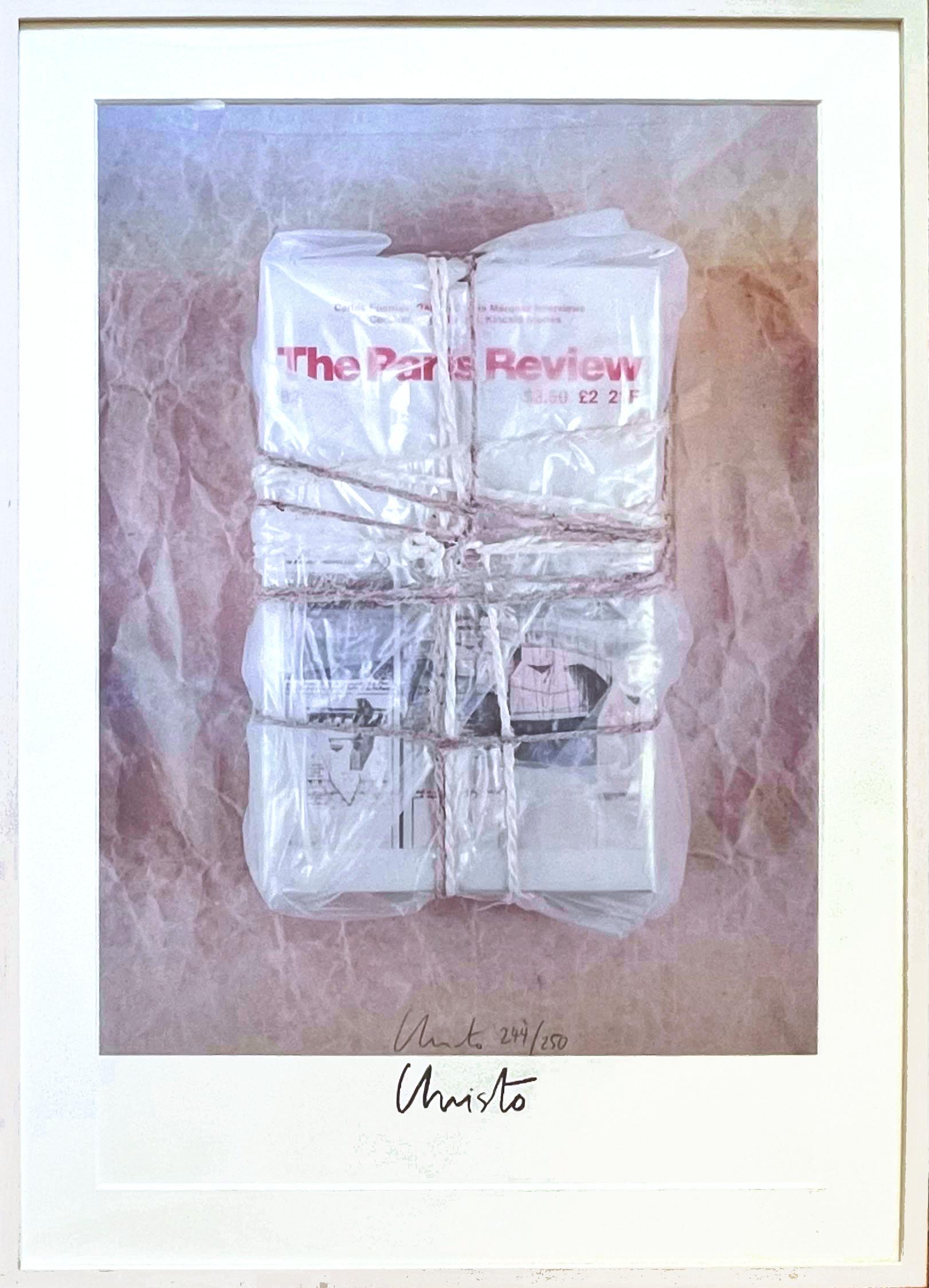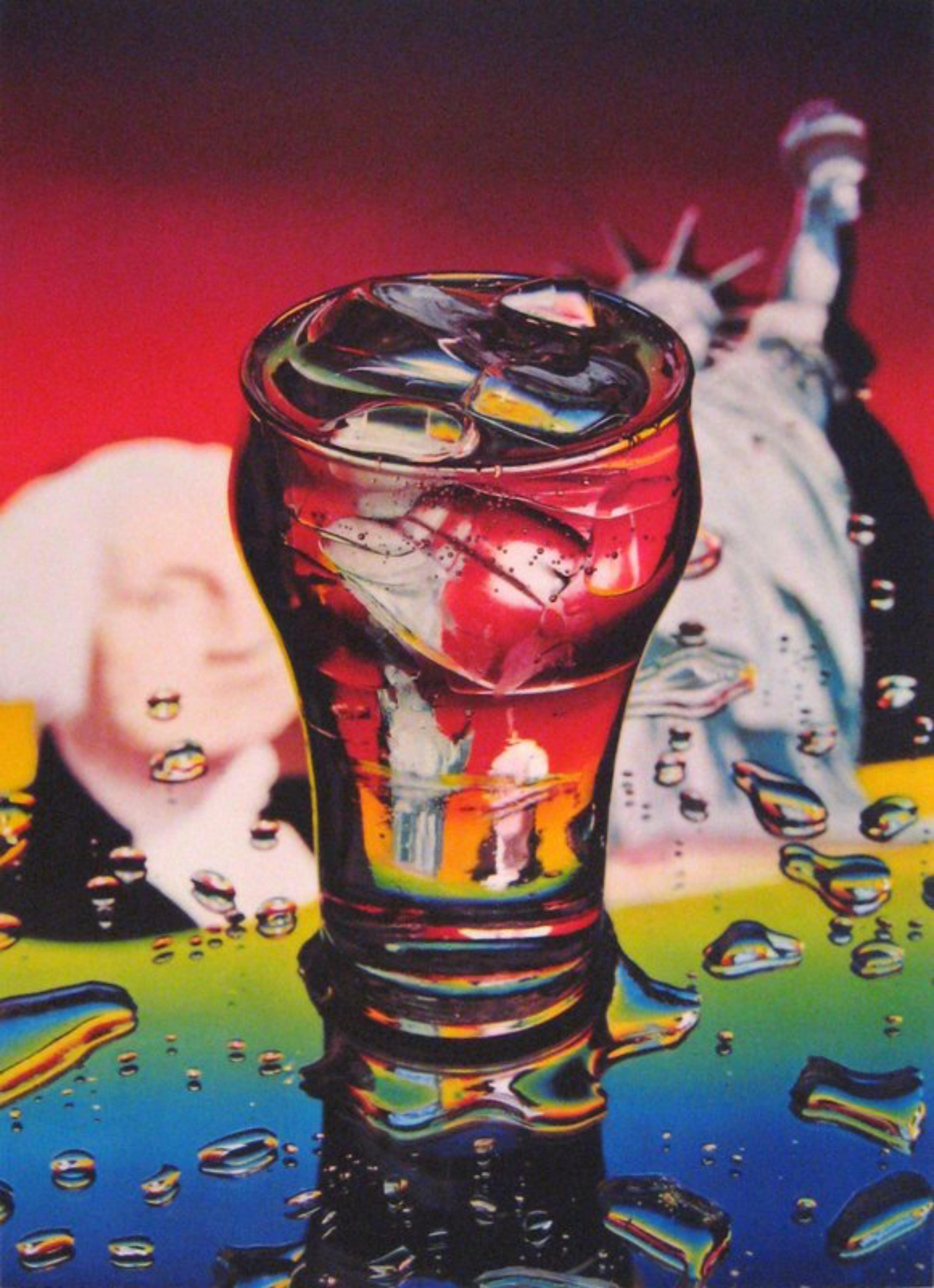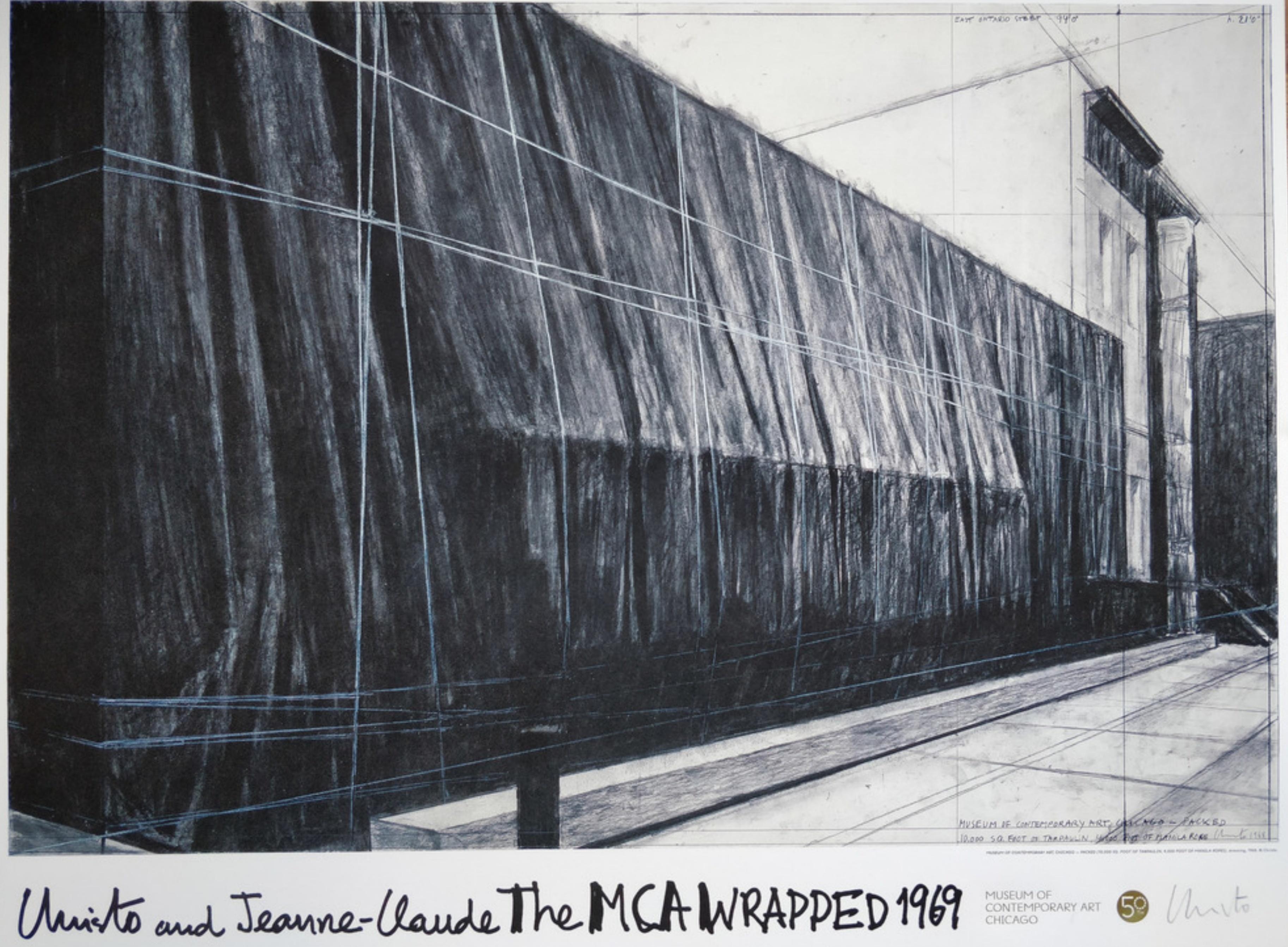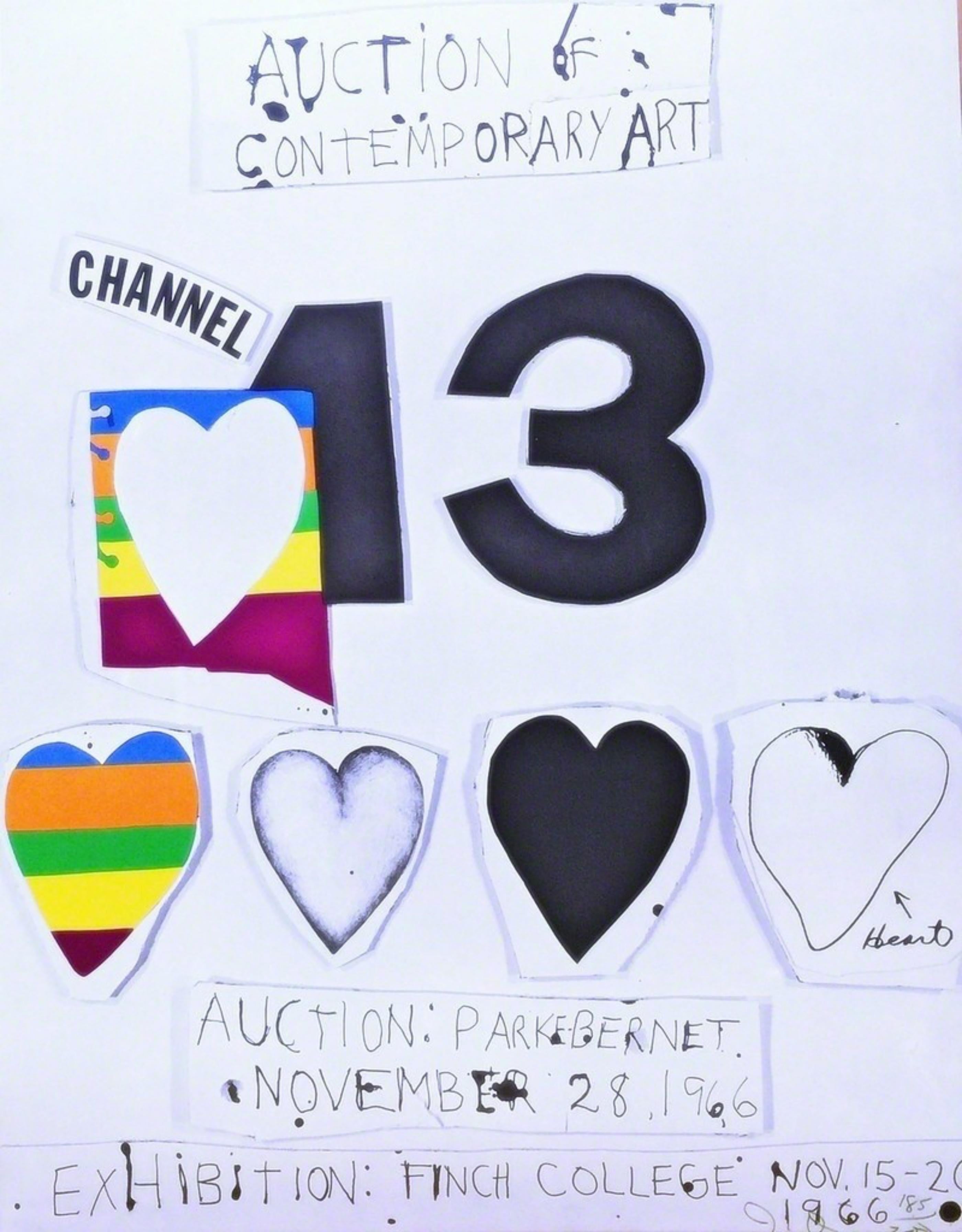Items Similar to Fun Vacation (200, Engberg) (Hand signed 13/16 by Ed Ruscha AND Kenny Scharf)
Want more images or videos?
Request additional images or videos from the seller
1 of 8
Ed Ruscha and Kenny ScharfFun Vacation (200, Engberg) (Hand signed 13/16 by Ed Ruscha AND Kenny Scharf) 1990
1990
About the Item
Ed Ruscha and Kenny Scharf
Fun Vacation (200, Engberg), 1990
Lithograph in five colors on white Rives BFK paper (hand signed by BOTH Ed Ruscha and Kenny Scharf)
36 × 27 inches
Hand-signed by artist, Hand signed by both Ed Ruscha and Kenny Scharf lower right; dated lower right; hand numbered 13/16 in pencil; with the printer's blind stamp
Printed/Published by Hamilton Press
Catalogue Raisonné: 200, Engberg
Unframed
Rarely seen on the market, since most other editions are already in the permanent collection of major museums and institutions, "Fun Vacation (The Cruiser)" is the result of a unique collaboration three decades ago - 1990 - between Ed Ruscha and Kenny Scharf. This historic piece is hand signed by both Ruscha and Scharf and numbered from the very limited edition of only 16. A terrific piece for collectors and fans of both of these artists. The sheet has desirable deckled edges, excellent condition, with natural bleed-through colors, and therefore must ship flat and not rolled. The ship is a motif that Ed Ruscha has visited many times, particularly as it is pictured here as a shadowy mirage that seems to both emerge from and disappear into the fog. Ruscha’s work from this period is viewed by many as a metaphor for the end of the American Dream that was originated by valiant sailors as they sailed through uncertainty and found a new land. In a recent conversation at the Metropolitan Museum of Art, Ruscha acknowledged that his entire career has been preoccupied with this endlessly fascinating theme. And this work -depicting an almost unmoored ship, also alluding to American space exploration - is as emblematic as any of that theme. In this rare work, Ruscha and Scharf design a fantastical narrative around the recurrent motif of the ship. Here, the printed slogans and psychedelic color strips are emblematic of Ruscha and Scharf’s vibrant and satirist practice.
Ed Ruscha - Biography:
There are things that I’m constantly looking at that I feel should be elevated to greater status, almost to philosophical status or to a religious status. That’s why taking things out of context is a useful tool to an artist. It’s the concept of taking something that’s not subject matter and making it subject matter.
—Ed Ruscha
At the start of his artistic career, Ed Ruscha called himself an “abstract artist ... who deals with subject matter.” Abandoning academic connotations that came to be associated with Abstract Expressionism, he looked instead to tropes of advertising and brought words—as form, symbol, and material—to the forefront of painting. Working in diverse media with humor and wit, he oscillates between sign and substance, locating the sublime in landscapes both natural and artificial.
In 1956, Ruscha moved from Oklahoma City to Los Angeles, where he attended the Chouinard Art Institute. During his time in art school, he had been painting in the manner of Franz Kline and Willem de Kooning, and came across a reproduction of Jasper Johns’s Target with Four Faces (1955). Struck by Johns’s use of readymade images as supports for abstraction, Ruscha began to consider how he could employ graphics in order to expose painting’s dual identity as both object and illusion. For his first word painting, E.Ruscha (1959), he intentionally miscalculated the space it would take to write his first initial and surname on the canvas, inserting the last two letters, HA, above and indicating the “error” with an arrow. After graduation, Ruscha began to work for ad agencies, honing his skills in schematic design and considering questions of scale, abstraction, and viewpoint, which became integral to his painting and photography. He produced his first artist’s book, Twentysix Gasoline Stations—a series of deadpan photographs the artist took while driving on Route 66 from Los Angeles to Oklahoma City—in 1963. Ruscha since has gone on to create over a dozen artists’ books, including the 25-foot-long, accordion-folded Every Building on the Sunset Strip (1966) and his version of Kerouac's iconic On the Road (2009). Ruscha also paints trompe-l’oeil bound volumes and alters book spines and interiors with painted words: books in all forms pervade his investigations of language and the distribution of art and information.
Ruscha’s paintings of the 1960s explore the noise and the fluidity of language. With works such as OOF (1962–63)—which presents the exclamation in yellow block letters on a blue ground—it is nearly impossible to look at the painting without verbalizing the visual. Since his first exhibition with Gagosian in 1993, Ruscha has had twenty-one solo exhibitions with the gallery, including Custom-Built Intrigue: Drawings 1974–84 (2017), comprising a decade of reverse-stencil drawings of phrases rendered in pastel, dry pigment, and various edible substances, from spinach to carrot juice. The first retrospective of Ruscha’s drawings was held in 2004 at the Whitney Museum of American Art. Ruscha continues to influence contemporary artists worldwide, his formal experimentations and clever use of the American vernacular evolving in form and meaning as technology and internet platforms alter the essence of human communication. Ruscha represented the United States at the 51st Venice Biennale (2005) with Course of Empire, an installation of ten paintings. Inspired by nineteenth century American artist Thomas Cole’s famous painting cycle of the same name, the work alludes to the pitfalls surrounding modernist visions of progress. In 2018 Ruscha’s Course of Empire was presented concurrently with Cole’s at the National Gallery in London.
-Courtesy Gagosian
More about Kenny Scharf
Kenny Scharf is an American painter. He was born in 1958 in Los Angeles, California, where he currently lives and works. In 1978 he moved to New York to study at the BFA School of Visual Arts from which he graduated in 1980. He befriended artists such as Jean-Michel Basquiat, Andy Warhol, and Keith Haring, and gained notoriety in the 1980s in New York for bridging contemporary art and graffiti. Scharf uses images from popular culture, especially from TV cartoons such as The Jetsons, The Flintstones, and The Simpsons, to bring art to everyday life. His art highlights a kind of eternal youth, a utopic colorful pop world full of comical monsters, floating donuts, and one-eyed creatures.
-Courtesy Jeffrey Deitch
- Creator:Ed Ruscha and Kenny Scharf (1937, American)
- Creation Year:1990
- Dimensions:Height: 36 in (91.44 cm)Width: 27 in (68.58 cm)
- Medium:
- Movement & Style:
- Period:
- Condition:
- Gallery Location:New York, NY
- Reference Number:1stDibs: LU1745214012312
About the Seller
5.0
Platinum Seller
These expertly vetted sellers are 1stDibs' most experienced sellers and are rated highest by our customers.
Established in 2007
1stDibs seller since 2022
289 sales on 1stDibs
Typical response time: 1 hour
- ShippingRetrieving quote...Ships From: New York, NY
- Return PolicyA return for this item may be initiated within 1 day of delivery.
More From This SellerView All
- Thou Shalt Have No Other Gods Before Me (The First Commandment)By Kenny ScharfLocated in New York, NYKenny Scharf Thou Shalt Have No Other Gods Before Me (The First Commandment), 1987 5-Color lithograph on Dieu Donne handmade paper with deckled edges 24 × 18 inches Hand signed, date...Category
1980s Pop Art Abstract Prints
MaterialsLithograph, Pencil, Graphite
- Wrapped Paris Review deluxe hand signed, numbered Lt Ed for literary publicationBy ChristoLocated in New York, NYChristo Wrapped Paris Review (Deluxe hand signed edition), 1982 Lithograph and offset lithograph Hand signed and numbered 244/250 by Christo on th...Category
1980s Pop Art Abstract Prints
MaterialsLithograph, Offset, Graphite, Pencil
- Yankee Flame Pop Art photorealist Lt Ed Signed/N. Statue of Liberty US PresidentBy Ben SchonzeitLocated in New York, NYBen Schonzeit Yankee Flame, from the portfolio: America: the Third Century, 1975 Collotype on wove paper Pencil signed and numbered 50/200 on the front Publisher: APC Editions, Chermayeff & Geismar Associates, Inc Printer: Triton Press 27 × 19 3/10 inches Unframed Note: this is the original hand signed and numbered collotype; not to be confused with the separate (unsigned) poster edition. This hand-signed, numbered and dated collotype in colors by photorealist pioneer artist Ben Schonzeit was created in 1975 for the portfolio America: the Third Century, commissioned by Mobil Oil Corporation in which 13 American artists, including Roy Lichtenstein, Ed Ruscha, Robert Rauschenberg, James Rosenquist and others created works celebrating America's bicentennial. Yankee Flame combines the iconic images of George Washington, Coca-Cola and the Statue of Liberty into a collaged interpretation of contemporary American life and the meaning of freedom. "Yankee Flame" is in excellent condition and never framed. It was acquired as part of the America: The Third Century full portfolio. Ben Schonzeit (b. 1942, Brooklyn, New York) is one of the original Photorealist painters and is considered to have pioneered the airbrush technique. His works often depict still life arrangements that are intentionally out of focus. He received his B.F.A. from The Cooper Union in 1964 and has since had over 50 solo exhibitions both in the United States and abroad. His paintings are held in numerous museum collections including the Solomon R. Guggenheim Museum in New York, Virginia Museum of Fine Arts in Richmond, Virginia, and the Metropolitan Museum of Art in New York. In 1973 Nancy Hoffman introduced me to Ben Schonzeit in the backroom of her gallery on West Broadway. She had been open less than a year, and Ben was one of the artists in her original stable. His large Crab Blue It had arrived from his studio a few days earlier and was leaning against the wall. I thought at the time it was one of the most impressive, virtuosic Photorealist works I had seen. That first encounter was more than a quarter of a century ago and I have always considered it to be one of the quintessential, tour de force paintings of American Photorealism. In the early seventies one could stand on West Broadway on any pleasant, sunny weekday and see less than a dozen people on the street between the Nancy Hoffman Gallery and OK Harris Works of Art. Almost all of the SoHo galleries, such as Leo Castelli, Paula Cooper, Ward-Nasse, and Ivan Karp’s Hundred Acres, could be visited in an afternoon. At night the streets were almost deserted. With the exception of Andy Warhol, there were no art world superstars. More importantly, none of the artists expected to achieve celebrity status. That was a phenomenon of the eighties and nineties. There were a only a handful of restaurants and watering holes, such Elephant and Castle, Fanelli’s, the Spring Street Bar and Prince Street Bar. Fanelli’s closed on weekends, which was a holdover from their sweatshop clientele during lunch and ragtag group of artists in the evenings. In those early days of SoHo, the drafty, raw sweatshop spaces with their large windows, rough floors, and service elevators provided large, inexpensive living quarters and studios for many artists. Unlike today, there were no boutiques. The area was not chic and with the exception of Lowell Nesbett’s showplace, the lofts were not glamorous. Schonzeit was in the same living and working space the he now occupies when I first visited him, but SoHo was a very different time and place. When the National Endowment of the Arts recommended me to curate America 1976, which turned into one of the major visual arts projects for the Bicentennial, Ben Schonzeit was on the first list of participants I made up for the U.S. Department of the Interior. His large diptych, Continental Divide, was one of the most memorable works produced for the exhibit. I stopped by his studio four or five times while it was in progress and have visited him many times over the years. We have maintained a very cordial working relationship and friendship over the past three decades. I saw The Music Room exhibit in 1978 and realized at the time that the vigorously rendered mural sized canvases and mirror and related works represented a major catharsis in his painting. In many ways, it and the other paintings and drawings based on the same image represented a sharp, decisive break with the tenets of Photorealism, or at least the photo-replicative aspects that had been so widely heralded in America and abroad in the mid-seventies. Over the years we have continued to work together. He has been in almost all of the major exhibitions I have curated here and abroad and in almost all of the books I have written. I am familiar with his studio habits, his quiet, internalized restlessness that manifests itself in the hundreds of small, unknown drawings and watercolors, doodles on napkins during lunch, and imaginary landscapes. I also know that he would rather do a painting than think or talk about it. Over the years I have followed the shifts in his studio procedure from the monumental airbrushed fruit and vegetable paintings to the most recent bouquets of flowers and decorative paintings. Our discussions of these matters tends to lapse into a verbal shorthand at this point. The following essay is based on both my longstanding familiarity and admiration for his work and involvement with contemporary realism and figurative painting. A booklet of color xeroxes with notes made up by Schonzeit was extremely helpful. In addition to several interviews, much of the information unfolded through a lengthy series of Emails. Due to our different working habits these were composed and sent out very late at night and answered by Ben the following morning. They dealt with the specifics of many of the paintings, generalities, his background and childhood in Brooklyn, and occasional bits of art world gossip. And there were odd discoveries. Prior to discussing his witty, tongue in cheek painting of Buffalo Bill, I did not know or had long forgotten that William Cody...Category
Mid-20th Century Pop Art Abstract Prints
MaterialsOther Medium, Pencil, Lithograph
- Absolut RuschaBy Ed RuschaLocated in New York, NYEd Ruscha Absolut Ruscha, 1988 Offset Lithograph in colors on wove paper Hand signed and dated by Ed Ruscha in pencil on lower right front Limited Edition of 200 (unnumbered) 45.25 x...Category
1980s Pop Art Figurative Prints
MaterialsLithograph, Pencil
- The Wrapped (MCA), Chicago 1969 (Limited Edition of 200, Hand Signed by Christo)By Christo and Jeanne-ClaudeLocated in New York, NYChristo and Jeanne-Claude The Wrapped (MCA), 1969 (Hand Signed), 2019 Four-color offset lithograph on 110 lb. Crane Lettra Cover stock, with an elegant gold foil stamp. Hand Signed by Christo 22 3/5 × 30 inches Edition of 200 Hand-signed by artist, Signed in graphite pencil by Christo on the front. Also elegant gold foil stamp. Unnumbered from the documented limited edition of only 200 Published by Museum of Contemporary Art, (MCA) Chicago Unframed A great gift for anyone with ties to Chicago! This limited-edition, hand signed offset lithograph on 110 lb. Crane Lettra Cover stock commemorates Christo's exhibition "Wrap In Wrap Out", which took place at the MCA’s original location on 237 East Ontario Street, Chicago. The project became the first public building Christo and his wife, Jeanne-Claude, wrapped in the United States. In an illuminating 2010 article entitled, "A daring plan to wrap a Chicago museum raises city ire – and makes art history," author Robin Amer recounts how Christo came to choose Chicago -- or rather how Chicago chose New York based artist Christo: "During a recent conversation he [Christo] ticked off the list of buildings he approached in downtown Manhattan starting in 1961. “Number 2 Broadway, number 20 Exchange Place,” he recalled. “We tried to wrap a building at Times Square. They all said no. Christo said he quickly realized that his best hope to wrap a building – his first in North America – would be to wrap a museum, which might be more amenable to his strange proposition.Christo and Jeanne-Claude approached New York’s Museum of Modern Art in 1967. The museum was interested, but Christo said they failed to secure permission for the show from the New York Fire...Category
1960s Pop Art Abstract Prints
MaterialsFoil
- Five Hearts for Channel 13 (Public Television), deluxe hand signed limited ed.By Jim DineLocated in New York, NYJim Dine Love for Channel 13 Lithograph. Hand signed and numbered recto 27 × 21 1/2 inches Edition 185/200 Signed and numbered 185/200 in graphite pencil on the recto Unframed Rarel...Category
1960s Pop Art Figurative Prints
MaterialsLithograph, Offset, Pencil
You May Also Like
- Large Bus by Allen Jones classic British 1960s pop art in bright primary colorsBy Allen JonesLocated in New York, NYThis large Allen Jones lithograph is printed exuberantly in primary colors. A swath of bright red brushstrokes represents the side of a bus. In the upper left, small windows reveal the passengers: a woman’s face is cut off above her vampy red lips, and a blue-haired man’s face is hidden. Royal blue fills the upper right corner of the composition, giving the impression of looking up at a passing bus against the cloudless sky. One can imagine Jones was thinking of the iconic red double decker bus the AEC Routemaster, first introduced in London in 1954. In the 1960s buses were a living symbol of familiar and new technology coexisting: as David Bucken put it, “In and around London a midpoint change on a journey might involve alighting from an RT bus, of which production had started just prior to World War II, and getting on one of the sexy new Routemasters.” In the artist’s words: “The whole problem as a figurative artist was that it was going against the main march of modernism, which was towards abstraction. But here was a way of making the subject you were painting the same as the object you were painting on. By making the canvas a rhomboid, and putting little wheels on it, you have a schematic version of a vehicle, in this case a London bus.” Jones plays with the space between abstraction and figuration: windowed passengers, elaborated with just a few lines and placed adjacent to a weighty red ground of brushstrokes, easily convey the form of a bus, yet the print also conveys Jones’ visceral, painterly delight in color play. Four color lithograph on wove paper Paper 28.5 x 42.5 / 72.4 X 108 cm Wood frame 31 x 46 x 2 in. / 78.75 x 117 x 5 cm with 1 in. moulding Signed by the artist lower right in pencil, labeled Trial Proof lower left in pencil. Edition 20. Printed at Tamarind Los Angeles with Clifford Smith...Category
1960s Pop Art Abstract Prints
MaterialsLithograph
- Tumbleweed, James RosenquistBy James RosenquistLocated in New York, NYLithograph on Black Fabriano paper. Signed by the artist and dated 1970 lower right in pencil; numbered 59/68 lower left in pencil. This electric blue image of a neon sculpture was d...Category
Late 20th Century Pop Art Figurative Prints
MaterialsLithograph
- Original Musée d’Art Moderne de la Ville de Paris vintage pop-art posterBy Robert CombasLocated in Spokane, WAOriginal poster: a l'Arc Musee d'art Moderne; artist Robert Combas; lithograph, 1984, excellent condition. Ready to frame. Year: 1984. Size 24.87" x 32.12" Artist: Robert Combas This poster is also known as the Cat or "Le Chat". Vintage original poster...Category
1980s Pop Art Abstract Prints
MaterialsLithograph
- Robert Rauschenberg 'Core'By Robert RauschenbergLocated in New York, NYC.O.R.E. 1965 Lithograph Signed and numbered edition of 200 36 X 24 inches Robert Rauschenberg’s work reflects a methodology between the approaches of structuralism and post-...Category
21st Century and Contemporary Pop Art Abstract Prints
MaterialsLithograph
- Shepard Fairey Screen-prints: collection of 60 works (2009-2022)By Shepard FaireyLocated in NEW YORK, NYShepard Fairey Screen-prints: collection of 60 works: 2009-2022: A rare assemblage of 60 hand-signed Shepard Fairey screen-prints; collected over a near 15 year period (2009-2022). Notable imagery includes: Bob Marley, Keith Haring, Ruth Bader Ginsburg, Kurt Cobain, as well as a series of vivid anti-war pieces defining the artist's practice (title list found further below). Each very well-preserved. Medium: Screen-prints on heavy paper. 2009-2022 (see below for a list of titles & years). Dimensions ranging from: 19.5 x 16 inches to 24x36 inches. Each work is hand-signed; works are either numbered from their respective main editions or notated 'AP' (see last listing image); a few or several works are signed, but not numbered. Excellent overall condition with the exception of perhaps some minor signs of handling on a few examples. Provenance: Private collection New York via Shepard Fairey. Listing images beginning with image 2 represent the actual works. These works will be shipped flat using protective materials. Please feel free to contact us with any additional questions. Titles & Years: OCEAN TODAY...Category
21st Century and Contemporary Pop Art Abstract Prints
MaterialsLithograph, Screen
- Milton Glaser San Diego Jazz Festival 1983 (Milton Glaser posters)By Milton GlaserLocated in NEW YORK, NY1980s Milton Glaser Poster Art: San Diego Jazz Festival: Vintage original Milton Glaser poster c.1983. Designed by Milton Glaser on the occasion of the San Diego Jazz Festival, a Pacific Coast event depicted with a suit-and-sandal clad bear at dusk. Several favorite Glaserisms show up here: the swirling contours, the loose cross-hatching and the saxophone. Offset lithograph poster in colors. 24x36 inches. Very good overall vintage condition with the exception of perhaps some minor signs of handling. A suit-and-sandal bear heralds this Pacific Coast event with a serenade with a beautiful sunset. Several favorite Glaserisms show up here: the swirling contours, the loose cross-hatching and the sax. Literature: Milton Glaser Posters Legendary graphic designer, illustrator, and art director Milton Glaser created some of the most recognizable iconography in America today —including the iconic I ♥ N Y logo —and countless posters and ad campaigns. Glaser changed the face of commercial art in the 1960s and ’70s, breaking with the conventions of modernism and drawing inspiration from a wide variety of art-historical and pop-cultural sources, from Art Nouveau to comic illustration...Category
1980s Pop Art Figurative Prints
MaterialsLithograph, Offset





